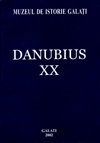Note bibliologice cu privire la “der Türkenkalender für <1455>”, (Mainz, 1454)
Bibliological notes regarding “der Türkenkalender für <1455>”, (Mainz, 1454)
Author(s): Dan Râpă-BuicliuSubject(s): Cultural history
Published by: Muzeul de Istorie „Paul Păltănea” Galaţi
Summary/Abstract: The article deals with a rare and valuable piece of bibliophily, the incunable Eine Mahnung Der Christenheit Widder Die Durken (commonly known by the name Der Türkenkalender fûr <1455>), printed in Mainz, in 1454. The work was printed in the workshop of J. Gutenberg, though his direct contribution to its realization is still not clear. It is the oldest booklet ever printed in Europe. Its printing reflects the new historical and diplomatic situation of Europe, after the fall of Constantinople under Turkish occupation. The Kalendar launches an appeal to the entire Christianity, to start a crusade against the Ottomans. It also pleads for the spiritual unity of Western Christianity, for its submission to a single central power. The printing of this calendar represents the results of an initiative of the Papality attempting to strengthen its authority, mainly in Italy and Germany. An interesting element of the Kalendar are its astrological predictions regarding the good faith awaiting Christianity in the year to come (1455). The calendar is particularly important for the Romanian history since, according to Constantin Karadja, the first Romanian erudite who studied the calendar, it contains the first mention of the Romanian countries, called by the name “Dacia”, in a printed document. The calendar makes a call to all the rulers of the European Christian countries to rise against the Islamic threat and, among these rulers, it also mentions the ruler of “Dacia”
Journal: Danubius
- Issue Year: XX/2002
- Issue No: 1
- Page Range: 139-149
- Page Count: 11
- Language: French

